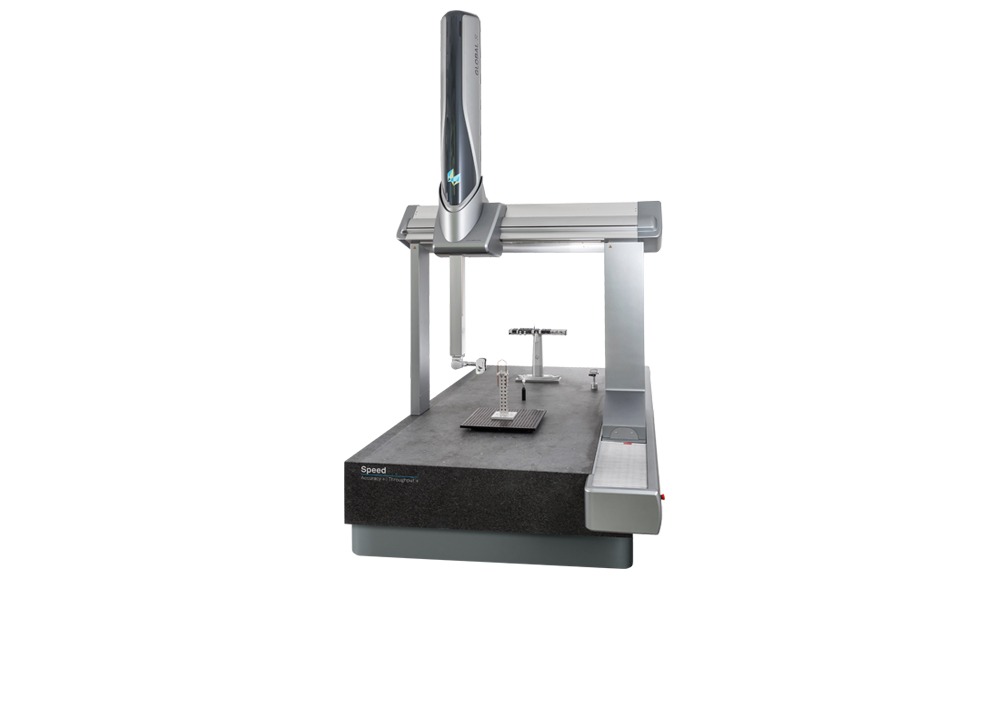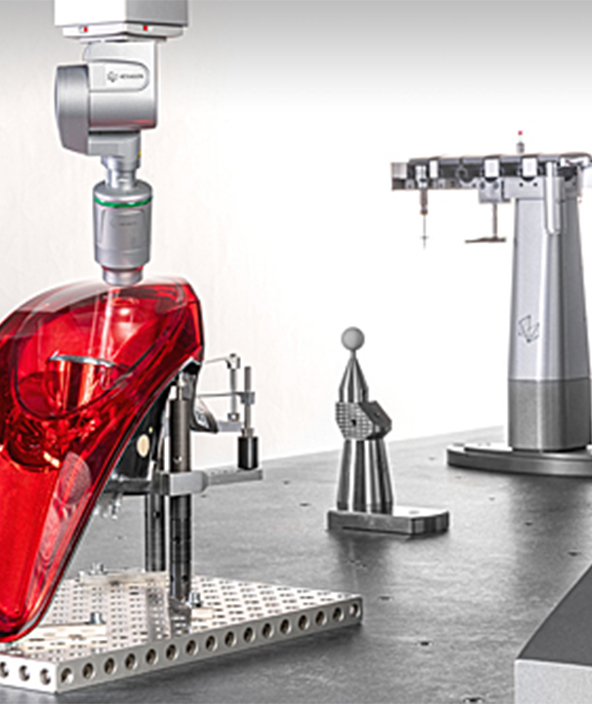Measuring aerofoil blades in a fraction of the time
Advanced laser scanning technology allows fast and accurate blade profile measurement, regardless of the material and surface finish

The inspection of aerofoil blades can be time consuming. Quality control can take almost as long as the production process itself because it requires extremely high levels of accuracy and precision. The shape of an aerofoil, or a turbine blade, can vary dramatically because of their wide-ranging applications. These features have very specific tolerances; any potential flaws can bring about changes in the aerodynamics causing fuel inefficiencies. This is especially the case if the leading-edge shape changes from nominal, like with flat spots from wear and tear. It can also cause dangerous hotspots on the blades themselves. In combination with the GLOBAL Speed coordinate measuring machine (CMM), the HP-L-10.10 laser scanner can quickly cover an entire aerofoil blade and can easily measure almost any material or surface finish.
The usual way to achieve the level of accuracy required for aerofoil inspection is with tactile measuring strategies. While this is highly accurate, physical contact along the surface of the workpiece in a linear motion is time consuming and, in some cases, can be damaging to the blade.
The aerospace industry is predicted to require a further 40 000 aircraft in the next few years so there is a real need for faster quality control. With part inspection of aerofoil blades, non-contact measurement systems have traditionally involved a compromise between three factors: flexibility, accuracy, and throughput. The HP-L-10.10 laser scanner eliminates this compromise. It can be used to scan complex objects in a relatively short period of time capturing up to 600 000 points per second. Add to that the greater throughput and higher point density of laser line scanning technology and we are talking about a true step change in efficiency.
Non-contact blade measurement just got smarter
Traditionally, where levels of part surface reflection and refraction vary, coordinate measuring machine (CMM) operators would have to make specific adjustments such as spraying the part prior to inspection. Applying surface spray can affect the measurement accuracy as it is a manual process which is not easily repeatable. The HP-L-10.10 laser scanner eliminates this requirement with Hexagon’s Systematic High-Intelligence Noise Elimination (SHINE) technology. SHINE benefits aerospace manufacturers by providing the capability to collect high-quality and high-accuracy data, even from the reflective surfaces common to the aerospace sector.
Non-contact measurement eliminates the possibility of leaving marks on newer blades with reflective surfaces. The sensor has a high optical dynamic range so it can easily move between scanning different blade surfaces without manual adjustments. With this solution you can scan multiple aerofoil sections in just one pass. This promises to significantly reduce the inspection bottle neck.
The benefit of using a laser line scanner with a CMM is that you have the capability of easily scanning blades of all different sizes, from small compressors up to large turbine blades for power generation. The sensor uses a long laser line (up to 90 mm). This means the entire surface of a blade can be scanned in a short time. It also offers a flexible stand off and variable scanning speed so the laser can zoom in and slow down for high point density scans if a critical area needs closer inspection.
Supports visualisation and reporting
A unique feature of this solution is the way it supports visualisation and enhanced reporting. Once the scan is complete, the software will allow users to generate a colour map of the workpiece. This makes visual inspection far easier; from there the overview camera (OVC) can take an image of the areas in question. Photographic documentation like this is ideal for inclusion in reports and presentations. The ability to capture and share images taken in situ promotes collaboration between the design, engineering and production processes. Photographs from the OVC will inform the discussion and help staff find and fix errors in the design or production processes.
For the complete solution, the entire inspection process can be controlled with the Blade add-on to Hexagon’s leading PC-DMIS metrology software. PC-DMIS Blade has been developed in partnership with industry to form a turnkey solution for aerofoil manufacturers.
With PC-DMIS Blade, production and quality engineers can measure the complex geometry of aerofoils within a simple user interface. Setting up different measurement routines is straightforward, and it can easily be configured to inspect and report on critical blade characteristics like profile, mean camber lines, edge thickness, chord and twist angles.
With the combination of products from Hexagon’s Manufacturing Intelligence division, this complicated quality inspection process is faster, simpler and smarter.



